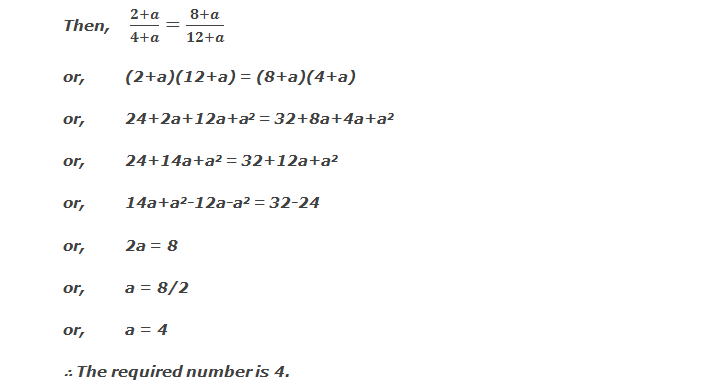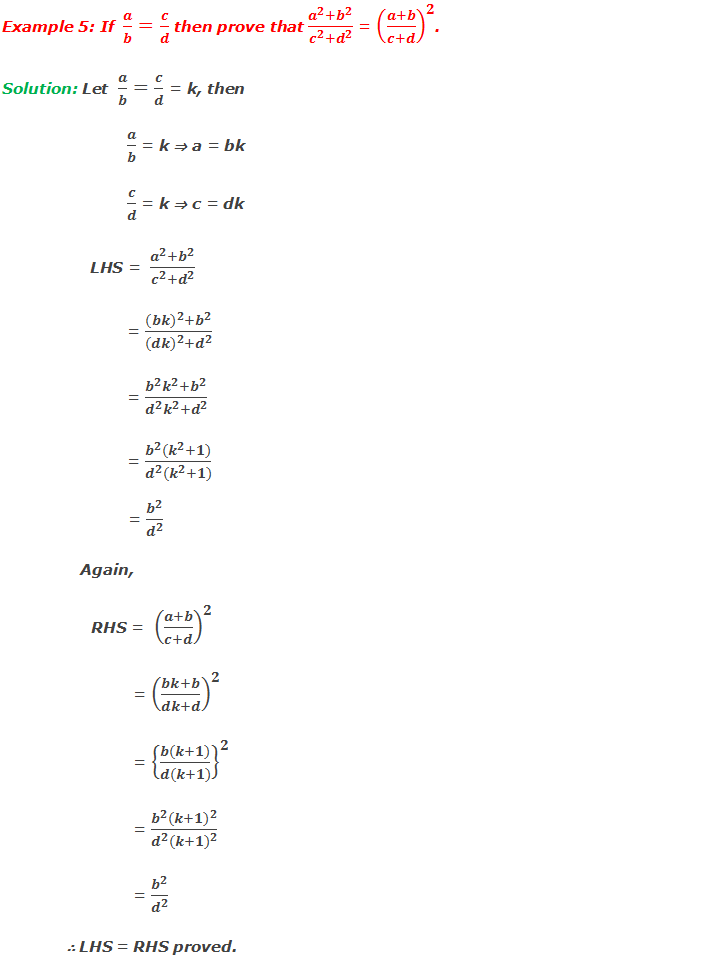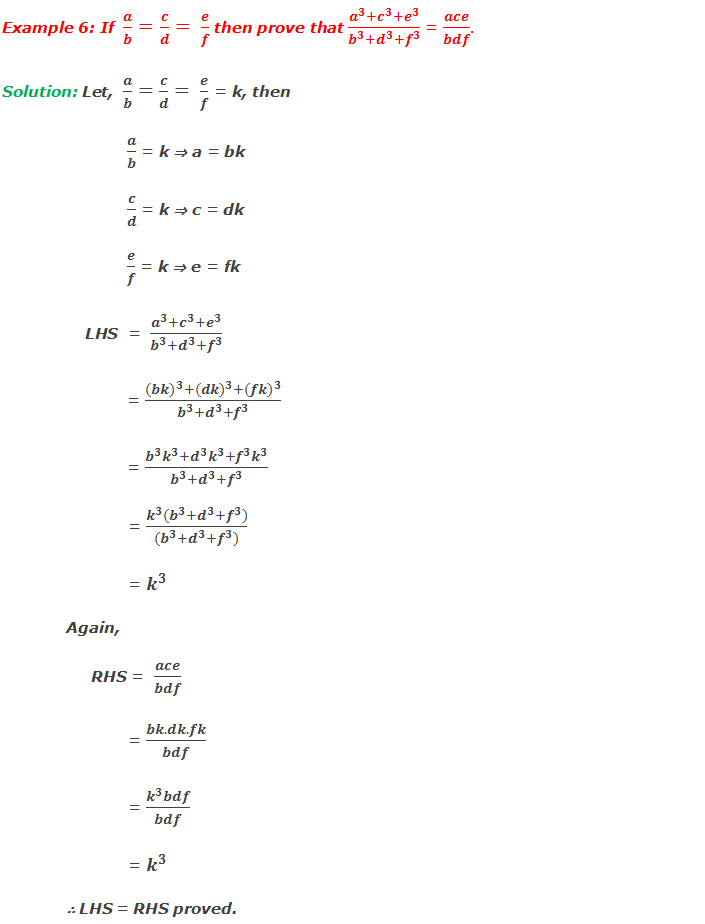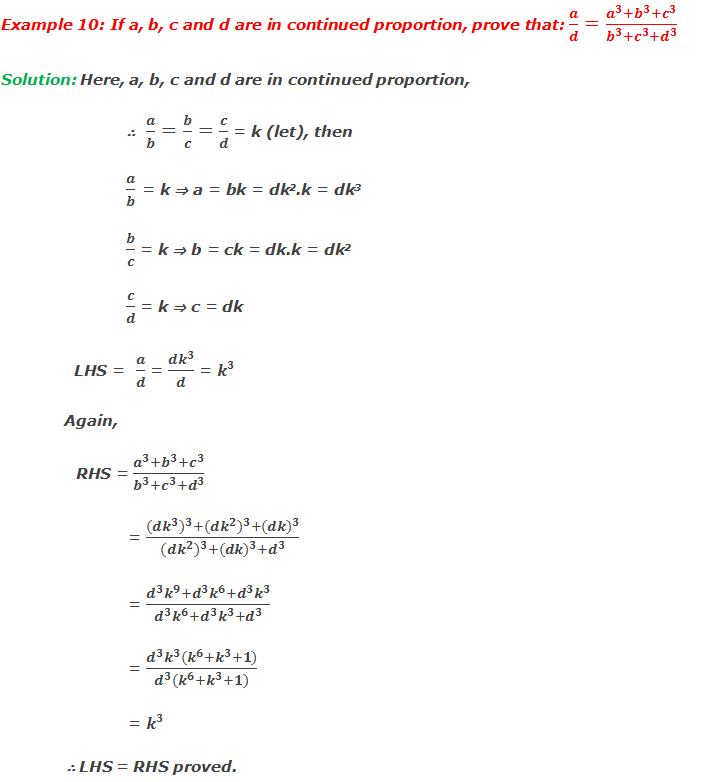Proportional
If two ratios are equal then they are
said to be in proportion or proportional. If a/b = c/d, it is
written as a:b::c:d and read as ‘a’ is to ‘b’ is as ‘c’ is to ‘d’. The first
term ‘a’ and the fourth term ‘d’ are called extremes and second term ‘b’ and third term ‘c’ are called means.
********************
10 Math Problems officially announces the release of Quick Math Solver and 10 Math Problems, Apps on Google Play Store for students around the world.
********************
********************
If a:b = b:c = c:d i.e. a/b = b/c = c/d then
the terms a, b, c, d are said to be in continued
proportion.
If a/b = b/c then b2 = ac. Thus
three quantities are said to be in continued proportion if the product of
extremes is equal to the square of mean.
Properties of proportion
If a, b, c and d are four numbers then,
1. Invertendo:
This property is called as invertendo.
2. Alternendo:
This property is called as Alternendo.
3. Componendo:
This property is called as componendo.
4. Dividendo:
This property is called as dividendo.
5. Componendo and dividendo:
This property is called componendo and dividendo.
6. Convertendo or subtendo:
This property is called convertendo or subtendo.
7. Addendo:
Some problems on proportional and their solutions:
Example 1: If 5, 10, 15 are in proportion,
find the fourth proportion.
Solution: Let x be the fourth proportion. Then 5, 10, 15 and x are in proportion.
Example 2: If 2, x, 6 and 12 are in proportion,
find the value of x.
Solution: Here, 2, x, 6 and 12 are in proportion.
Example 3: 4, x and 9 are in continued
proportion, find the value of x.
Solution: Here, 4, x, 9 are in continued proportion.
Example 4: What number should be added to
each of the numbers 2, 4, 8 and 12 to make them proportional?
Solution: Let the required number be a.
advertisement6
advertisement7
You can comment your questions or problems regarding the proportional here.






















0 comments: